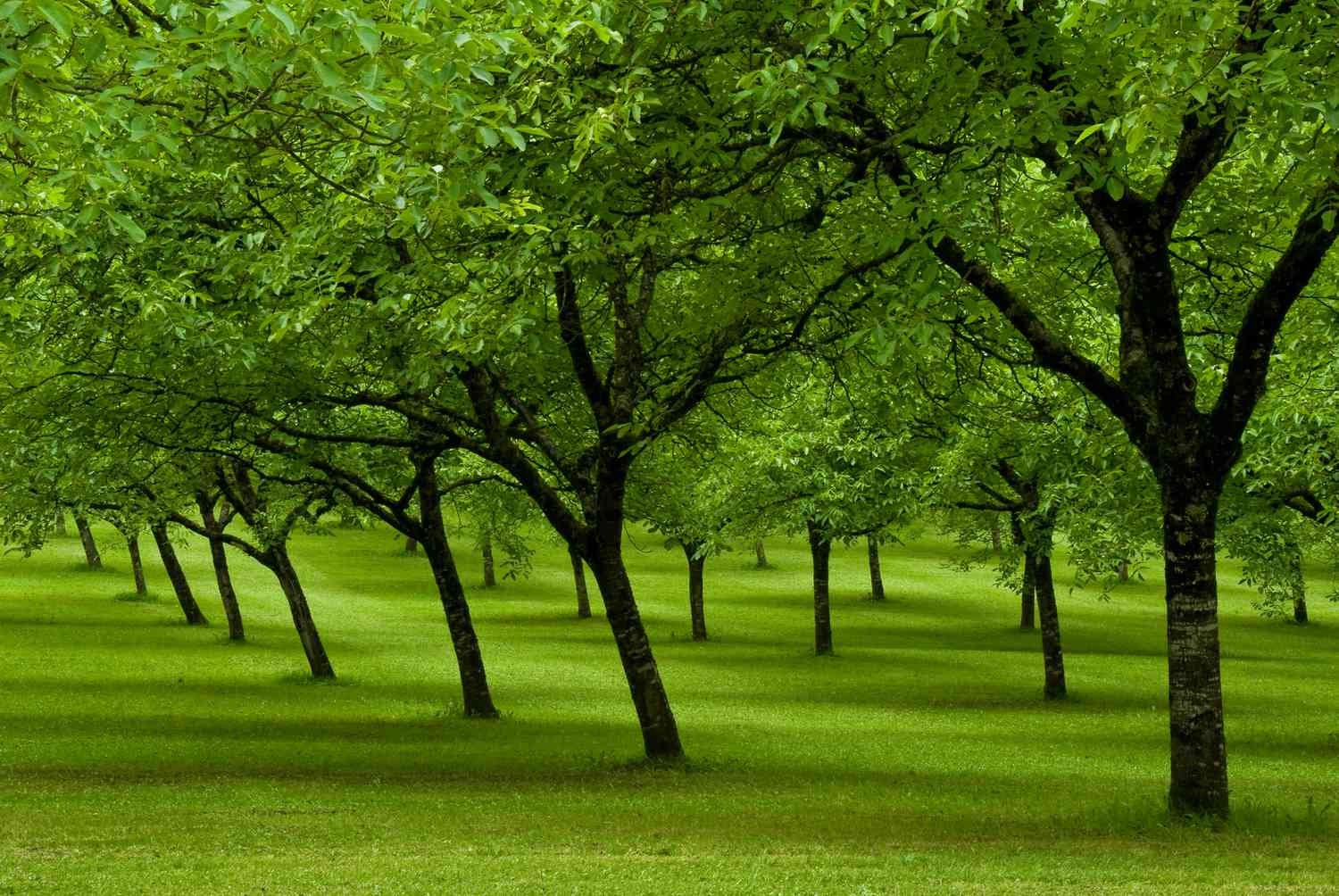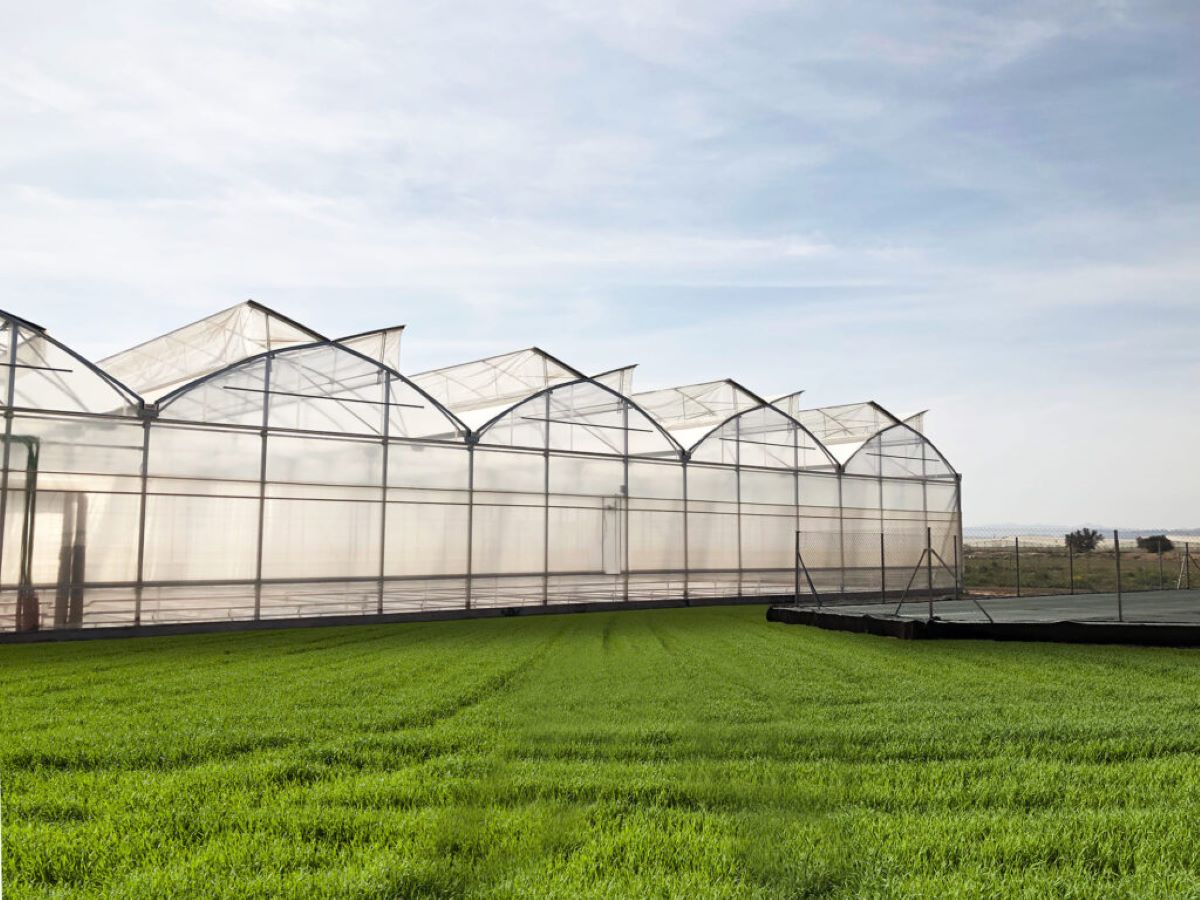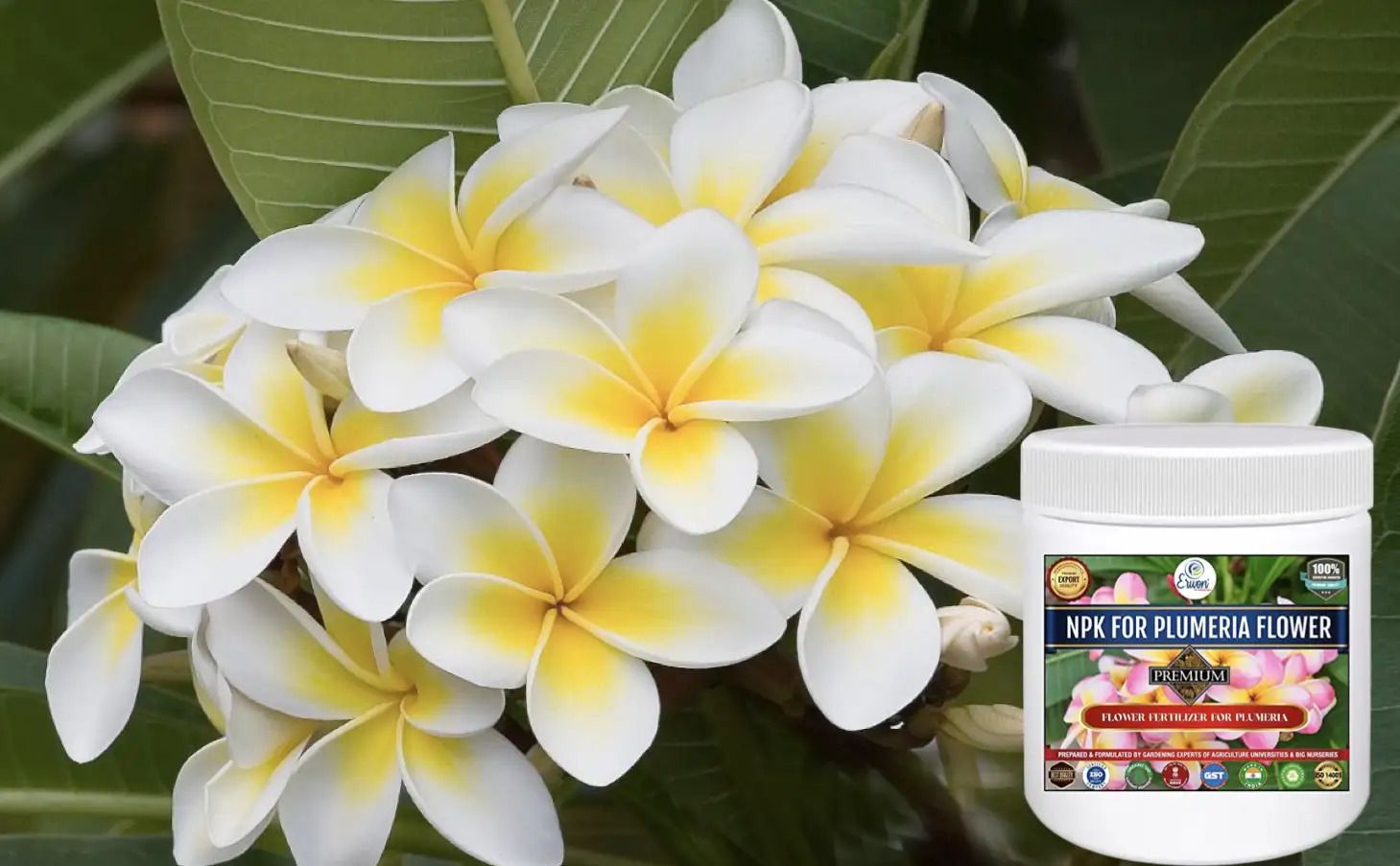Home>Gardening News and Trends>Latest News>What Are The Kinds Of Trees


Latest News
What Are The Kinds Of Trees
Modified: January 22, 2024
Discover the latest news about the various types of trees, their characteristics, and benefits. Stay informed and learn more about the world of trees.
(Many of the links in this article redirect to a specific reviewed product. Your purchase of these products through affiliate links helps to generate commission for Chicagolandgardening.com, at no extra cost. Learn more)
Table of Contents
Introduction
Trees are an integral part of our ecosystem, providing numerous benefits such as oxygen production, habitat for wildlife, and natural beauty. There are various types of trees that exist across the globe, each with its own unique characteristics and features. Understanding the different kinds of trees can help us appreciate their diversity and make informed choices about planting and caring for them.
In this article, we will explore some of the most common types of trees found worldwide. From towering coniferous giants to delicate flowering trees, each type offers its own distinctive charm. Whether you are a nature enthusiast, a gardener, or simply curious about the natural world, learning about the various kinds of trees will deepen your appreciation for these living wonders.
Exploring the world of trees will take us on a journey through different environments and climates. We will discover the diversity of tree species, from the evergreen coniferous trees of snowy landscapes to the vibrant deciduous trees that color our autumns. We will also delve into the lush and tropical environments that are home to unique tropical tree species. Finally, we will explore the bountiful fruit trees that provide us with delicious and nutritious treats.
So, fasten your seatbelts and get ready to embark on an exciting adventure into the world of trees. Let’s dive in and explore the different kinds of trees and what makes each one special.
Coniferous Trees
Coniferous trees, also known as evergreen trees, are a diverse group of trees that are characterized by their needle-like leaves and cones. These trees are well-adapted to cold climates and can be found in regions such as the northern parts of North America, Europe, and Asia.
One of the most iconic coniferous trees is the majestic pine tree. With its tall stature and distinctive triangular shape, the pine tree is often associated with winter landscapes. Pine trees are known for their strong, durable wood and have been used in construction, furniture making, and paper production for centuries.
Another popular coniferous tree is the spruce tree. Spruce trees are known for their dense foliage and conical shape, making them ideal for use as ornamental trees in landscaping. The wood of spruce trees is highly valued for its strength and is commonly used for construction and musical instrument manufacturing.
Fir trees are also a common type of coniferous tree. These trees are known for their symmetrical appearance and soft, flat needles. Fir trees are often used as Christmas trees due to their pleasant fragrance and ability to retain their needles for a long time.
One unique feature of coniferous trees is their ability to retain their leaves, or needles, throughout the year. This adaptation allows them to photosynthesize and produce oxygen even during winter months when deciduous trees have shed their leaves. The evergreen nature of coniferous trees adds beauty and color to winter landscapes.
In addition to their aesthetic appeal, coniferous trees provide important ecological benefits. Their dense foliage provides shelter and protection for birds and small animals. The cones produced by coniferous trees serve as a source of food for birds and mammals, making them an important part of the food chain.
Overall, coniferous trees are a fascinating group of trees that play a vital role in our ecosystems. Their unique characteristics and adaptability make them a resilient and enduring presence in both natural and human-made landscapes.
Deciduous Trees
Deciduous trees are a diverse group of trees that are known for their seasonal leaf-shedding behavior. Unlike coniferous trees, deciduous trees lose their leaves during the winter months and regrow them in the spring. This natural cycle of leaf change adds a splash of vibrant colors to landscapes during the autumn season.
One commonly recognized deciduous tree is the oak tree. Oaks are known for their strong, sturdy trunks and wide-spreading branches. They are long-lived trees that can live for several hundred years. Oaks are also valuable for their wood, which is used in construction, furniture making, and even wine barrel production.
Maple trees are another popular type of deciduous tree. They are known for their iconic leaf shape and stunning autumn foliage. Maple syrup, beloved by many for its sweet taste, is derived from the sap of maple trees. Some species of maple trees also have beautiful bark patterns, adding visual interest to their overall appearance.
Birch trees are known for their distinctive white bark and delicate foliage. They create a striking contrast against the greenery of other trees, making them a popular choice in landscaping. Birch trees are also valued for their durable wood, which is used in various applications such as furniture, flooring, and plywood.
Deciduous trees provide numerous benefits to the environment. During the warmer months, their broad leaves provide shade and help to cool the surrounding areas. The fallen leaves contribute to the natural recycling of nutrients in the soil, enriching it and fostering a healthy ecosystem. In addition, deciduous trees provide habitat and food sources for many species of birds and insects.
Humans have also found practical uses for deciduous trees. The wood from these trees is utilized in construction, furniture making, and crafting. The beauty of their vibrant foliage attracts tourists and outdoor enthusiasts, who flock to witness the breathtaking display of colors during the fall season.
Overall, deciduous trees add beauty, charm, and ecological value to our landscapes. Their seasonal leaf change not only signals the arrival of new seasons but also reminds us of the ever-changing cycles of life in the natural world.
Tropical Trees
Tropical trees are a fascinating group of trees that thrive in warm and humid climates near the equator. These trees are adapted to the unique conditions of tropical regions, where they face high temperatures, intense sunlight, and abundant rainfall. The lush and vibrant landscapes of tropical rainforests are home to a wide variety of tree species.
One iconic example of a tropical tree is the palm tree. Palm trees are known for their tall, slender trunks and large, fan-like leaves. They are often associated with tropical beaches and are a symbol of relaxation and leisure. Palm trees also produce a variety of useful products such as coconuts, palm oil, and palm fronds, which are used for thatching and crafting.
The kapok tree is another notable tropical tree. Also known as the ceiba tree, it is one of the largest trees in the tropical rainforest, reaching heights of up to 200 feet. The kapok tree has a unique umbrella-shaped canopy and whimsical, spiky trunk roots that provide stability in the dense rainforest soil. The soft, fluffy fibers from the kapok tree’s seed pods were traditionally used for stuffing pillows and mattresses.
Other tropical trees include the mango tree, known for its delicious and juicy fruits, and the mahogany tree, prized for its valuable timber. The flamboyant tree, with its vibrant red-orange flowers, is another tropical tree that adds a touch of flamboyance to the landscape.
Tropical trees play a crucial role in maintaining the health of the ecosystem. The dense canopies of trees in tropical rainforests provide shade and create a cool and humid microclimate below, which supports a wide array of plant and animal species. These forests are also known for their high biodiversity, making them hotspots for conservation efforts.
Unfortunately, tropical trees are under threat due to deforestation and habitat loss. The clearing of tropical forests for agriculture, logging, and urbanization has led to the decline of many tree species and the loss of valuable ecosystems. It is essential to protect and preserve these unique and diverse habitats for future generations.
Tropical trees are not only remarkable for their adaptability to the challenging tropical environments, but they also provide us with invaluable resources and contribute to the rich biodiversity of our planet. Their beauty, resilience, and ecological significance make them a vital part of our natural heritage.
Fruit Trees
Fruit trees are a delightful addition to any garden or orchard, providing both beauty and bounty. These trees are cultivated for their edible fruits, which come in various shapes, sizes, and flavors. Growing fruit trees not only adds aesthetic appeal to the landscape but also allows us to enjoy the delicious and nutritious fruits they produce.
Apple trees are one of the most beloved and widely grown fruit trees. They come in countless varieties, each with its own unique flavor and texture. From crisp and tart Granny Smith apples to sweet and juicy Honeycrisp apples, there is a variety to suit every taste. Apples are not only enjoyed fresh but also used in a wide range of culinary creations, from pies and tarts to applesauce and cider.
Citrus trees, including orange, lemon, and lime trees, are popular fruit trees in warmer climates. These trees not only provide refreshing fruits but also add a touch of vibrant color with their shiny leaves and fragrant blossoms. The tangy and juicy fruits from citrus trees are not only delicious on their own but also used in beverages, desserts, and savory dishes to add flavor and brightness.
Peaches, pears, plums, cherries, and apricots are all examples of fruit trees that grace our gardens and fruit baskets. Each type of fruit tree brings its unique taste and texture, making them a treat for the senses. These fruits can be enjoyed fresh, dried, or used in various culinary creations such as pies, jams, and preserves.
When planting fruit trees, it is important to consider the specific growing requirements of each tree species. Factors such as sunlight, soil type, and climate can greatly influence the tree’s health and productivity. Pruning and proper care are also essential to ensure optimal fruit production and tree longevity.
Fruit trees not only provide us with delicious treats but also attract wildlife to the garden. Birds, squirrels, and other animals are drawn to the trees’ fruits, adding liveliness and biodiversity to the surroundings. It’s a joy to witness these creatures feasting on the fruits while providing natural pest control.
Cultivating fruit trees is a rewarding experience that allows us to connect with nature and enjoy the fruits of our labor. Whether we grow them for personal consumption or to share with others, fruit trees bring us closer to the natural world and remind us of the cycle of life and abundance.
Evergreen Trees
Evergreen trees are a diverse group of trees that retain their foliage and stay green throughout the year, regardless of the changing seasons. These trees have adapted to various climates and environments, providing year-round color and texture to landscapes.
One iconic example of an evergreen tree is the cedar tree. Cedar trees are known for their tall, slender trunks, and their branches gracefully droop downwards. The aromatic wood of cedar trees is highly valued for its natural resistance to decay and is commonly used for construction, furniture making, and even as a natural insect repellent.
The spruce tree is another well-known type of evergreen tree. With its conical shape and vibrant green needles, the spruce tree adds beauty and elegance to any landscape. Spruce trees are commonly used as Christmas trees due to their symmetrical form and their ability to retain their needles for a long period, even when cut.
Juniper trees are also popular evergreen trees, known for their hardy nature and unique blue-green foliage. These trees are often used as ornamental shrubs or in landscaping to create a soft and textural backdrop. Some species of juniper trees produce small, berry-like cones that are used in culinary applications and the production of gin.
Evergreen trees have several advantages beyond their aesthetic appeal. They provide year-round shade, reducing sunlight penetration and moderating temperatures. This can be especially beneficial in hot climates, providing relief from the scorching sun. The dense foliage of evergreen trees also serves as a natural windbreak, protecting nearby areas from strong winds.
In addition to their practical benefits, evergreen trees offer important ecological contributions. They provide habitat and food sources for a variety of wildlife, offering shelter and protection. The dense foliage of evergreen trees helps to retain soil moisture, preventing erosion and supporting healthy ecosystems.
Some evergreen trees, such as the pine tree, also produce pine cones. These cones contain seeds that provide a food source for birds and small mammals, ensuring their survival during harsh winters when other food sources may be scarce.
Whether used as privacy screens, windbreaks, or simply to add a touch of green to the landscape, evergreen trees provide year-round beauty and contribute to the overall health and balance of the environment.
Conclusion
Exploring the world of trees reveals the remarkable diversity and beauty of the plant kingdom. From towering coniferous trees to the delicate blossoms of fruit trees, each type of tree offers its own unique characteristics and benefits. Understanding the different kinds of trees not only deepens our appreciation for the natural world but also empowers us to make informed decisions about tree planting and conservation efforts.
Coniferous trees, with their evergreen foliage and adaptability to harsh climates, provide year-round beauty and serve as important habitats for countless species. Deciduous trees enchant us with their seasonal leaf change, adding bursts of vibrant colors to the landscape and providing shade during the warmer months. The lush tropical trees of equatorial regions offer a glimpse into the mesmerizing world of rainforests, while fruit trees reward us with delicious treats and add a touch of joy to our gardens and orchards. Evergreen trees, with their enduring foliage, grace landscapes with their presence throughout the year.
We must remember the invaluable role that trees play in our environment. They provide us with oxygen, filter the air we breathe, and contribute to the health and sustainability of ecosystems. Trees also offer shelter and food for a wide array of wildlife, supporting biodiversity and ecological balance.
As stewards of the Earth, it is crucial to recognize the importance of preserving and protecting trees. Planting trees, supporting reforestation efforts, and practicing responsible tree care can make a significant difference in combating deforestation and climate change. By appreciating and valuing the different kinds of trees, we can ensure a greener and more sustainable future for generations to come.
So, let us continue to marvel at the majesty of coniferous trees, relish in the ever-changing beauty of deciduous trees, embrace the vibrant tropical trees, savor the fruits of fruit trees, and admire the endurance of evergreen trees. Together, let us celebrate and care for these magnificent living wonders that enrich our lives and our planet.







